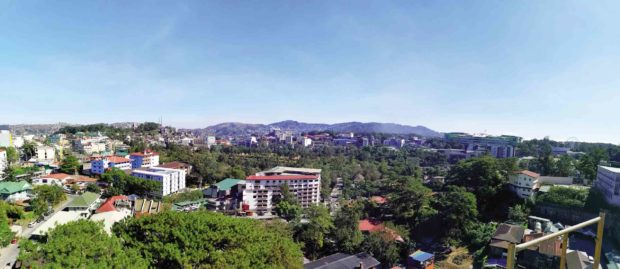Inarguably, the Baguio Flower Festival, now on its 25th staging, has been the most successful marketing campaign for a city reeling from a tragedy.
Baguio had to rebuild for the second time since the end of World War II when the 1990 Luzon earthquake ravaged the mountain city. To lure back tourists, businesses and Baguio residents who packed up and fled the devastation, like-minded friends led by the late lawyer Damaso Bangaoet Jr., fleshed out the idea of a grand festival in 1995 that would highlight the city’s flowers, its perpetually cool temperature, and its Cordillera roots.
In one of his last interviews, Bangaoet, a former president of the defunct John Hay Poro Point Development Corp. (JHPPDC), said they studied the Pasadena Rose Parade in California, the Rio Carnival of Brazil, and the city’s old grand “cañao” (community feast) when they shaped the flower festival.
Employees of JHPPDC and its developer, Camp John Hay Development Corp., organized the first street dancing and floral float parades as highlights of the festival.
Panagbenga soon evolved into a city-wide undertaking, now managed by volunteers of the Hotel and Restaurant Association of Baguio, with the collaboration of the city’s 128 villages, landscapers and flower traders, and street dancers and marching bands from grade schools and colleges.
BAGUIO BLOOMS Panagbenga, or the Baguio Flower Festival started in 1995 as a small community-run event, before it blossomed into one of the country’s top crowd-drawing events. —PHOTOS BY EV ESPIRITU
‘Too successful’
It was “too successful,” said experts now helping the city map its redevelopment. They observed a possible correlation between the growth of tourism and the migrant population and the popularity of the festival.
Today, the city has a daytime population of over 700,000 residents, students, traders, shoppers and office workers which tax its resources, the experts said.
New priorities
Businesses are still looking forward to the grand street dancing parade on March 28, and the grand floral float parade on March 29. A festival trade fair called Baguio Blooms has been extended until April, while a street bazaar that takes over downtown Session Road for a week opens on March 30.
But the monthlong delay in activities due to the new coronavirus disease (COVID-19) coming out of China has given some people a moment to reflect on the festival’s new relevance now that it has fulfilled its original mission.
Joseph Alabanza, a retired city architect and a member of the Baguio Flower Festival Foundation Inc., said it might be time to use the Panagbenga brand to incorporate festivals of the BLISTT.
BLISTT stands for Baguio and the Benguet towns of La Trinidad, Itogon, Sablan, Tuba, and Tublay, which are part of an economic collaboration that Alabanza introduced after the 1990 earthquake.
Rechanneling investments
BLISTT rechannels big investments from Baguio to its neighbors in order to decongest the city. Some Baguio businesses have since migrated or have put up branches in towns like La Trinidad.
The lull also allowed the city council to review the festival’s impact on small businesses. Landscapers admitted that many of them surface only during Panagbenga, returning to farming at the conclusion of each event “because we can’t find landscaping clients.”
But the festival still inspires artisans like Maribel Chagwaten, who laid out a garden carpet for the first time as a festival participant.
This year, the city government has also removed its P4-million annual contribution to the festival, making it a purely private undertaking.
Instead, it has focused on improving its more traditional tourist draws, beginning with Burnham Park.
Burnham Park rehab
One of the city’s major redevelopment projects, the modernization of the popular Burnham Park will cost up to P480 million, which will be bankrolled by the Tourism Infrastructure and Enterprise Zone Authority (Tieza).
In the initial master plan, the boat rental docks and view decks at Burnham Lake will be redesigned and new walkways, benches and lighting fixtures imprinted with Cordillera symbols will be installed.
It still follows the principal designs of the late American architect Daniel Burnham, who drew up the plan for the city in the early 1900s and for whom the park was named.
The redevelopment of Mines View Park, another popular tourist destination, costs P317 million because of unusual features like a glass walkway that will replace the view deck. The proposal has been transmitted to Tieza for review.
CORDILLERA PRIDE Baguio’s indigenous peoples community is an integral part in the development of the summer capital.
Baguio Convention Center
Mayor Benjamin Magalong said the city government would maximize the potentials of the newly refurbished Baguio Convention Center. The city government intends to match the rates offered by hotels to agencies and companies that hold conferences and seminars in Baguio, said city tourism officer Alec Mapalo.
In 2016, the convention center lost P1.7 million because the city granted exemptions to many events held there.
Magalong said the city government would also finance the construction of five modular parking buildings to accommodate residents and tourists.
